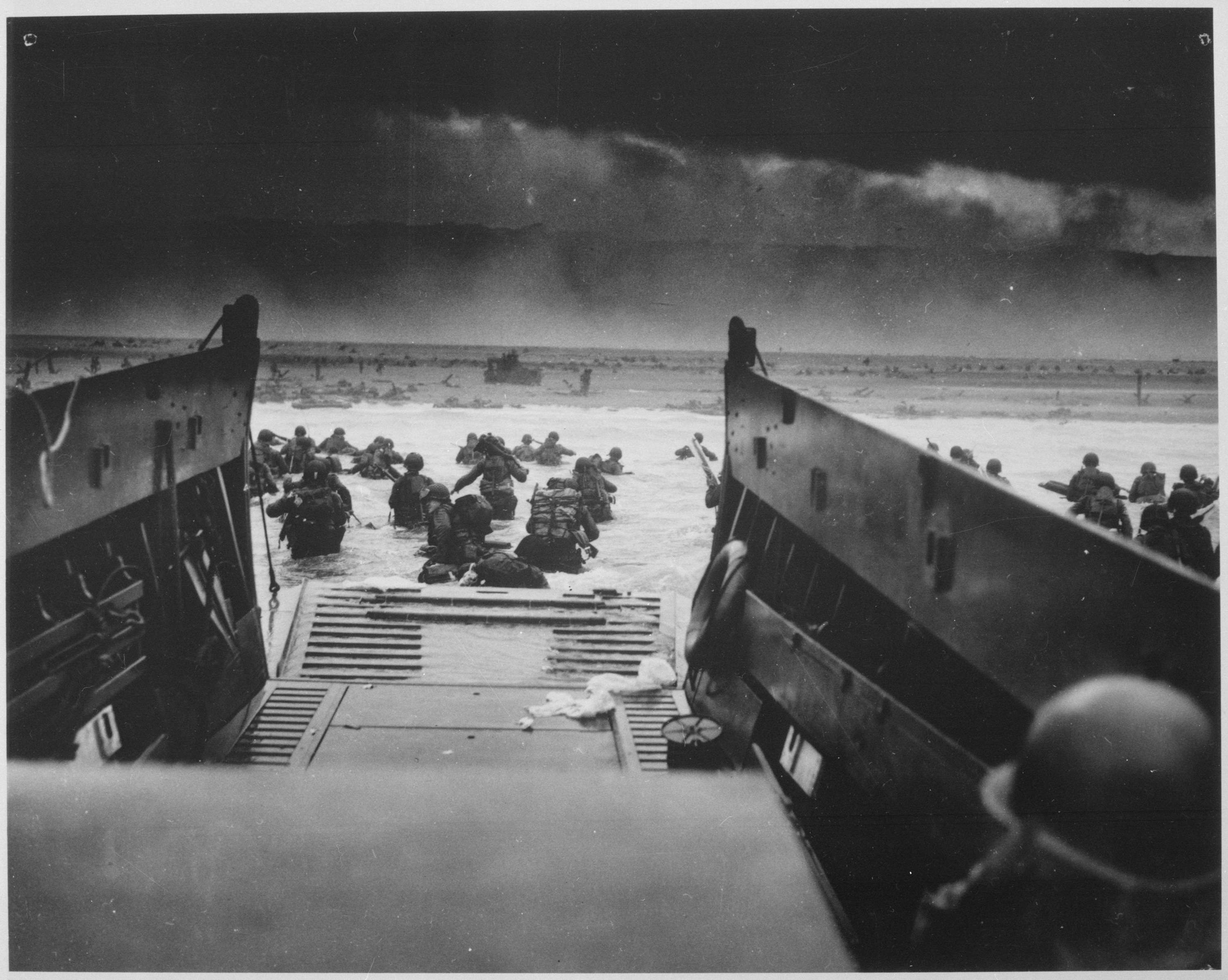Landings at Omaha beach during Normandy Invasion
6/6/1944
Add to Favorites:
Add all page(s) of this document to activity:

Entitled "Into the Jaws of the Death" by the Coast Guard, the original caption for this iconic photo reads:
Because of the tides, the attacks on the beaches were not simultaneous. The first took place at 04:55 at Utah, followed by Omaha, Gold, Juno, and ending at Sword at 07:25. None of the Allies’ first-day objectives had been achieved on June 6, and they suffered heavy casualties. An estimated 10,000 were killed, wounded, or missing in action. 6,603 were Americans, 2,700 British, and 946 Canadians.
The overall goal was to establish a position that would allow for the liberation of Western Europe before marching onward to Berlin. More than two months later, Paris was liberated on August 25, 1944. Eventually the Allied armies made their way to Berlin and victory in Europe was achieved by May 8, 1945.
"Down the ramp of a Coast Guard Landing barge Yankee soldiers storm toward the beach-sweeping fire of Nazi defenders in the D-Day Invasion of the French Coast. Troops ahead may be seen lying flat under the deadly machine gun resistance of the Germans. Soon the Nazis were driven back under the overwhelming Invasion forces thrown in from Coast Guard and Navy amphibious craft."June 6, 1944 was D-Day, one of the most well-remembered moments of World War II. On that day American, British, and Canadian forces stormed the 50-mile stretch of coastline in northwest France in the largest seaborne invasion in history. 150,000 troops, 7,000 ships, and over 13,000 aircraft were involved. 24,000 soldiers descended by air, the rest by sea. The beach along the 50-mile coastline was split into groups: Utah, Omaha, Gold, Juno, and Sword.
Because of the tides, the attacks on the beaches were not simultaneous. The first took place at 04:55 at Utah, followed by Omaha, Gold, Juno, and ending at Sword at 07:25. None of the Allies’ first-day objectives had been achieved on June 6, and they suffered heavy casualties. An estimated 10,000 were killed, wounded, or missing in action. 6,603 were Americans, 2,700 British, and 946 Canadians.
The overall goal was to establish a position that would allow for the liberation of Western Europe before marching onward to Berlin. More than two months later, Paris was liberated on August 25, 1944. Eventually the Allied armies made their way to Berlin and victory in Europe was achieved by May 8, 1945.
This primary source comes from the Records of the U.S. Coast Guard.
National Archives Identifier: 513173
Full Citation: Landings at Omaha beach during Normandy Invasion; 6/6/1944; Photographs of Activities, Facilities, and Personalities, 1939 - 1967; Records of the U.S. Coast Guard, Record Group 26; National Archives at College Park, College Park, MD. [Online Version, https://docsteach.org/documents/document/landings-at-omaha-beach-during-normandy-invasion, April 25, 2024]Activities that use this document
- Broadening the Perspective: Comparing D-Day Photographs
Created by the National Archives Education Team
Rights: Public Domain, Free of Known Copyright Restrictions. Learn more on our privacy and legal page.



